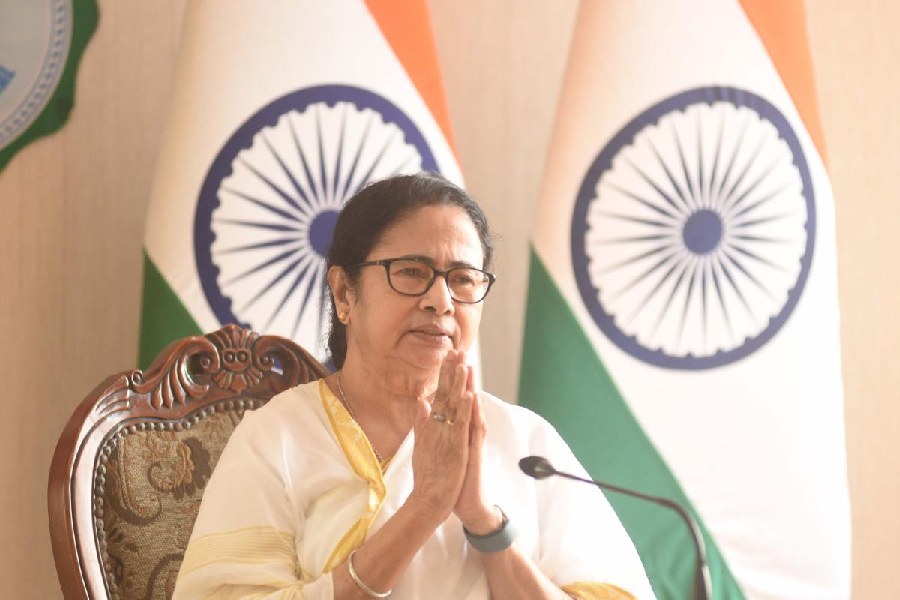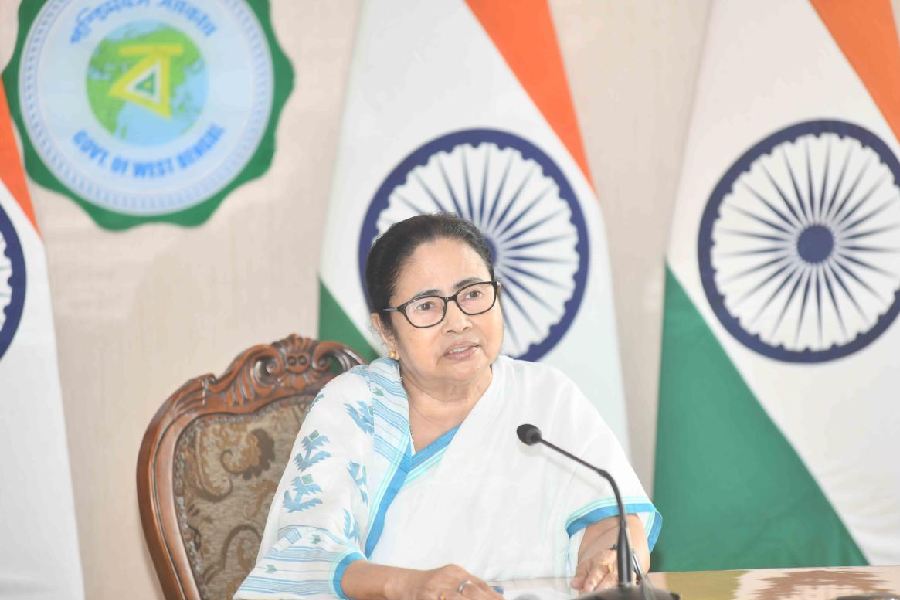An analysis of the provisional panchayat election results shows a small decline in Trinamul’s “strike rate” or the percentage of wins against seats contested, and a corresponding rise for the Opposition parties with the BJP continuing to occupy the runner-up spot in Bengal.
In an election where 88 per cent of the seats were contested compared with 66 per cent in 2018, the fall in the ruling party’s strike rate is unsurprising.
However, the rise in the BJP’s strike rate indicates its success in arresting the steady decline it had suffered since the 2021 Assembly elections, which had appeared to be creating space for a Left-Congress resurgence.
The state election commission continued to give provisional numbers even on Wednesday night, with the counting continuing in some places for a second day, rendering vote share comparisons meaningless.
“Data on the vote shares of political parties can only be generated after all the votes are counted. It’s calculated as the share of the total votes cast in an election,” economist Prasenjit Bose said. “There is no meaning to (calculating) vote shares before the counting process is fully over and the seat-wise votes have been published.”
In the absence of final vote-share figures, a closer look at the strike rates could throw some light on the relative performance of the parties, especially those in the Opposition.
In the gram panchayat tier, Trinamul by Wednesday evening had wins or leads from 35,520 of the 61,591 seats it contested, marking a strike rate of 57.67, a fall of nearly nine since 2018. The decline is, however, unlikely to bother the ruling party.
Chief minister Mamata Banerjee said on Wednesday: “The votes that Trinamul has received in the panchayat elections have made us self-reliant. We have seen plenty of violence, hatred and the incessant use of central agencies to harass Trinamul leaders and workers.… This mandate strengthens us further.”
The BJP, with wins or leads from 9,872 of the 38,475 seats it contested in the lowest tier, had recorded a strike rate of 25.66, a rise of nearly seven from 2018.
The CPM had wins or leads from 3,004 of the 35,411 gram panchayat seats it contested, or a strike rate of 8.48. Five years ago, the Left Front — the CPM plus all its Left allies — had a combined strike rate of around 5.
The Congress, with 2,606 wins or leads out of 11,774, boasted a healthy strike rate of 22.13 on Wednesday evening, up by more than 19 from the barely 3 it had registered in 2018.
At the panchayat samiti tier, Trinamul had 6,625 wins or leads out of the 9,419 seats it contested, marking a strike rate of 70.33, a fall of about 14 in five years.
The BJP, with 1,036 wins or leads out of 7,032, had a strike rate of 14.73, a rise of about 4 since 2018.
The CPM, with 191 victories or leads out of 6,752 contested seats, managed a strike rate of 2.83, a rise of around 1 from the Left’s 2018 strike rate. The Congress, with 274 wins or leads out of 2,197, had a strike rate of 12.47, a rise of over 10 in five years.
At the topmost tier of the zilla parishad, Trinamul had managed 823 wins or leads out of 928 — a strike rate of 88.69 that marks a fall of about 9 in 5 years.
The BJP, with 26 wins or leads out of 897 contested seats in the tier, had a strike rate of 2.9, twice that of 2018.
The CPM, with 2 wins or leads out of 747, had a strike rate of 0.27, fractionally better than five years ago. The Congress, with 11 wins or leads out of 644, had a strike rate of 1.71, compared with zero in 2018.
The BJP hailed its performance, especially in comparison with the others in the Opposition.
“There have been attempts from various quarters to downplay the BJP’s performance. But since 2021, the people of Bengal have set a binary — that the fight for Bengal is between the BJP and Trinamul, and no one else,” state BJP chief spokesperson Samik Bhattacharya said.
The CPM differed, claiming that once the vote share stats are declared, they would make it clear that the BJP had suffered a substantial decline while the non-Trinamul secular forces’ fortunes had risen.
According to Alimuddin Street’s estimates, the Left-Congress-ISF combine will have a vote share of around 21 per cent, up from 10-odd in 2021, while the BJP will have something in the vicinity of 22 per cent, representing a fall of 16 percentage points in two years.
“Ultimately, it will be the Left-Congress-ISF combine and not the BJP that will ensure that Trinamul is ousted from power here,” CPM central committee member Samik Lahiri said.












